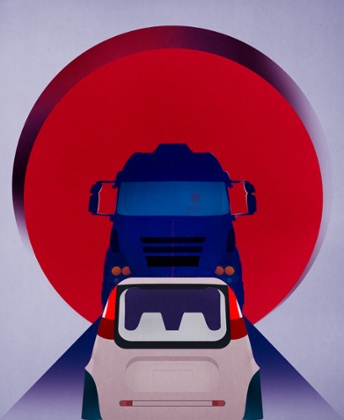Here’s an interesting parlour game for a wet Sunday afternoon: list the most significant technological innovations of the last two decades. The two items at the top of my list are the smartphone and the Google self-driving car.
The justification for the phone is, I think, obvious: it will become the device via which the vast bulk of humanity connects to the internet. The case for the self-driving car is more conjectural, and the thing that determines your view of it is whether or not you’re a geek. If you are, then the car is a self-evident engineering miracle – a triumph of the combinatorial innovation that the economist W Brian Arthur sees as the essence of technology – by which he means the way in which a number of different, separately evolving, technologies suddenly combine to enable something that was hitherto inconceivable.
If, however, you’re a normal human being then the notion that mass use of the self-driving car could become a practical reality in the foreseeable future seems like the purest hogwash. Just imagine, for example, all the regulatory changes that would be needed all over the world to make the vehicle a feasible everyday mode of transportation.
One reason why there is been so much excitement about the Google car is that it goes to the heart of a pathology of modern life – our dependence on automobiles. On the one hand, they are often essential tools for getting to and from work, ferrying kids to school, shopping etc. On the other hand, they are dangerous, expensive, polluting and inefficient: the average car ferries a single individual for most trips and is parked for most of the day. The promise of the autonomous vehicle (to give the Google technology a neutral name) is that it could fix many of those downsides: the vehicles will be safer (because 90% of accidents are caused by human error); they can work round the clock instead of sitting 9-5 outside workplaces; time currently wasted in traffic jams could be used productively; we could get to the point where we stop thinking that we need to own a car in order to have the advantages of motoring. And so on.

The safety angle seems to be the clincher – and not just for evangelists, either. The consultancy firm KPMG, for example, has recently released an assessment of the implications of autonomous vehicles for the insurance industry. It estimates that the adoption of self-driving cars could reduce accidents by 80%, and that the frequency of accidents would decrease, from one roughly every 280,000 miles driven now to one accident per 1.6m miles driven by 2040.
The reasoning behind this is that Google cars have now driven 2m miles on Californian roads with only 14 incidents, all of them, say the company, caused by other, human-driven, vehicles. “The conversion to autonomous vehicles,” concludes KPMG, “may bring about the most significant change to the automobile insurance industry since its inception. As the way we drive and commute transforms, the amount, types, and purchase of automobile insurance will be impacted. The disruption to insurers may be profound, and the change could happen faster than most expect.”
Well, it could, but somehow I think it’s going to take quite a while to get to self-driving nirvana. For one thing, autonomous vehicles require digital mapping that is an order of magnitude more detailed than anything in Google Streetview. Secondly, those maps need to be continually updated, because even an unexpected new mini-roundabout might confuse the vehicle and cause an accident.
But the biggest obstacle might come from what supposedly kept Harold Macmillan awake at nights – “events, dear boy, events”. Driving in Devon last weekend, I came on a number of temporary traffic lights at roadworks, and wondered how an autonomous vehicle would cope with them. After all, they would not appear on its digital map; and although it would be programmed to look for a red light in a standard position at a junction, it might not “see” a temporary one.
Devon is a ravishing county, but it has one quirk from the motorist’s point of view: it has lots of extremely narrow lanes, most of which have high hedges growing on either side. There are occasional passing places which allow two vehicles to edge past one another. This is fine until a procession of three or four vehicles meets another procession of several cars stuck behind a truck, at which point the only way to reach a solution involves a good deal of human-to-human negotiation. This is something that even the dumbest human is good at, but which will lie beyond the capability of even the smartest machine for some time to come. KPMG may have to revise its optimistic time scale.
guardian.co.uk © Guardian News & Media Limited 2010
Published via the Guardian News Feed plugin for WordPress.

